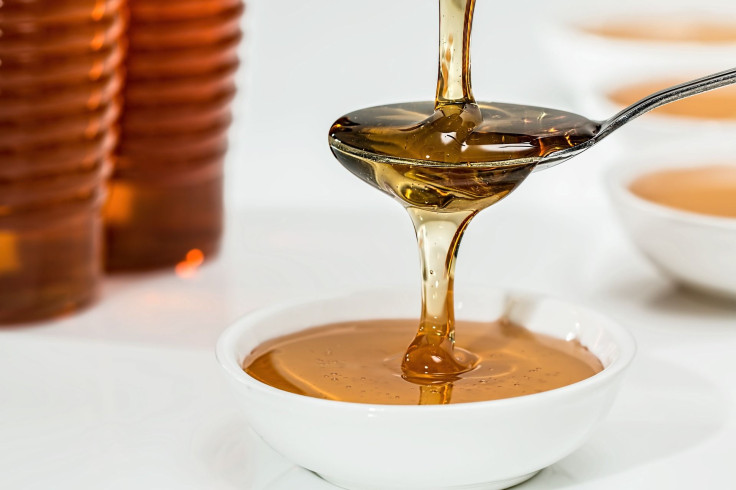Ancient Medicine For The Modern Human Body: 5 Old Paleo Treatments That Really Work

We owe everything to the human civilizations that came before us, from our government structure, to our complex languages, to our modern medicines. Our ancestors didn’t have the luxury of a sterile treatment environment or advanced prescription drugs; they had to make do with what they had. But not so much has changed — we still use some of their ancient remedies today.
Honey
What could be sweeter than a delicious treat doubling as medicine? Lots of ancient societies used honey to treat wounds and diseases of the intestines, including the Egyptians, Assyrians, Chinese, Greeks and Romans, as it “exhibits bactericidal activity against many organisms,” according to a 2013 study.
In ancient Egypt, honey was “a standard wound salve” when combined with grease and fiber and “almost all Egyptian medicines contained honey together with wine and milk,” according to the article, published in the Iranian Journal of Medical Sciences. It was used in embalming and to help heal infected wounds.
Over in Greece, honey was used to treat pain and fever. Hippocrates, the Greek scientist in whose name modern doctors take an oath to do no harm, “utilized honey for baldness, contraception, wound healing, laxative action, cough and sore throat, eye diseases topical antisepsis, prevention and treatment of scars,” making it a bit of a cure-all for him. Another historic figure, the Muslim prophet Mohammad, recommended honey to treat diarrhea, according to the article.
In modern times, research has shown that honey might stimulate immune responses in wounds and work as an anti-inflammatory, among other uses.
Acupuncture
Many people remember — or had nightmares from — the scene from the 1996 movie "Harriet the Spy," in which young gumshoe Harriet spies inside a Chinese-owned business and sees a man with needles and glass cups all over his backside. Acupuncture, the ancient Chinese practice of sticking thin needles through the skin to stimulate different body parts, has been used for pain in the back, neck, knees and head. More recently, some have touted acupuncture as a treatment for depression and to help people quit smoking, and scientists have been studying whether acupuncture can relieve symptoms related to cancer treatment, according to the National Center for Complementary and Integrative Health.
The glass, part of a suction therapy called cupping, is used to speed healing and returned to prominence during the 2016 Olympics, after viewers spotted athletes like U.S. swimmer Michael Phelps with circular bruises caused by the ancient Chinese treatment.
Aloe
If there was one thing ancient civilizations could agree on, it was aloe. It had medicinal uses in ancient Greek, Egyptian, Indian, Mexican, Japanese and Chinese cultures. In Egypt 6,000 years ago, according to the National Institutes of Health, the aloe vera plant was known as the “plant of immortality.” It’s been used to heal wounds, treat skin conditions and acts as a laxative.
Today it enjoys a good reputation as “a folk or traditional remedy for a variety of conditions, including diabetes, asthma, epilepsy, and osteoarthritis. It is also used topically for osteoarthritis, burns, sunburns, and psoriasis,” the NIH says.
(Pro tip: This writer finds aloe useful in calming and healing an itchy mosquito bite.)
Handwashing
It’s a simple idea but it does a heck of a lot. Washing your hands regularly reduces the spread of germs and illnesses, and it was an idea that can be traced back to the ancient Hebrews. Observant Jews throughout history have washed their hands for ritual purposes, such as before meals, and the cleaning is believed to have had a broader effect, such as partly helping to keep the Black Death from ravaging the medieval Jewish community as severely as it had others.
Since Hungarian doctor Ignaz Semmelweis made handwashing a popular idea in the medical community, it has saved countless lives. Today health organizations like the Centers for Disease Control call upon people to regularly wash their hands, particularly during flu season, as a way to prevent the spread of disease.
Willow Bark
In many societies, including the Chinese and Europeans, people used to chew on this bark to combat fever, pain and inflammation. It may have worked because of a chemical in the white willow’s bark: salicin, which is similar to aspirin, according to the University of Maryland Medical Center. “In fact, in the 1800s, salicin was used to develop aspirin.” The pain relief of willow bark happens more slowly but could be longer lasting than aspirin’s.
Nowadays willow bark has been suggested to act as an anti-inflammatory and analgesic.
And that’s your small dose of ancient medicine.
Published by Medicaldaily.com



























